Brief summary for kuari pass trek ( lord curzon trail).
Briefing about lord curzon –
He was an British officer
Served in the position of
Viceroy of India (1899-1905)
And
Foreign secretary for British India.
He first came to uttrakhand with lord lansdowne who first found lansdowne town.
With his guidance he first found kuari pass in 1905 .
A silk route used by Indian for trade with china.
He name this place kuari pass (meaning)
Kuari – unmarried or untouch in .
Location –
Kuari pass is located in Joshimath town Chamoli district of Gharwal region in Uttarakhand.
Duration and best time .
Kuari pass trek is popular winter trek .
Easy moderate trek of 26km.
It’s take minimum 5 days
And maximum 6 days.
Terrains –
Diverse landscape.
Oak tree
Alpine meadows
View from high altitude of all the 7000 and 8,000 mtr peak included mnt Nanda Devi Garud peak and Many more.
Brief about trek –
For kuari pass trek.
First you have to come Joshimath.
From here you have 2 ways in summer to do this trek .
1- Tugasi village
2- Auli
But in winter there is only one way that is Tugasi village.
In winter Auli route is very touch because of it’s rough train landscape with lots of dangerous rig.
From tugasi village It’s very easy in winter to do trek
DAY 1 : Drive from Rishikesh to Tugasi | Start of the Journey
DAY 2 : Trek from Tugasi Base Camp to Gulling
DAY 3 : Trek from Gulling camp site to Khulara camp site
DAY 4 : Khullara to Kuari Pass Summit and Back to Camp
DAY 5 : Khulara Camp site – Base Location Tugassi To Rishikesh
Itinerary
Begin your trip early from Rishikesh and travel towards Tugasi village near Joshimath, located in Chamoli district. The 8–10 hour drive offers amazing views of rivers, forests, and mountain roads. Enjoy the peaceful surroundings and changing landscapes as you move deeper into the Himalayas
After breakfast, start your trek from the Tugasi base point. Walk through green forests and open meadows, crossing small streams along the trail. As you move higher, enjoy the fresh mountain air and calm surroundings. By afternoon, reach Gulling and settle into your campsite. End the day with a warm meal and a quiet evening in the heart of nature.
• After breakfast, begin your journey toward Khulara Camp.
• The trail takes you through breathtaking views of snow-covered peaks and lush alpine meadows.
• On reaching Khulara, enjoy the peaceful surroundings and the stunning panoramic scenery.
• Rest for the night under a blanket of stars and soak in the calm mountain atmosphere.
• Start early in the morning for the trek towards Kuari Pass.
• Climb up to an altitude of about 12,500 ft (3,800 m).
• From the top, enjoy panoramic views of Nanda Devi and other majestic Himalayan peaks.
• Spend some time at the summit, soaking in the scenery and capturing photos.
• Trek back down to Khullara campsite.
• End the day relaxing under a clear, star-filled sky.
We’ll return from Khullara campsite to Tugasi Base Camp by 11:00 AM, then drive from Tugasi (near Joshimath) back to Rishikesh, ending our trek journey.”
Includes/Excludes
Includes
- →Transport
- →Forest Permit and entrance fee
- → Accommodation in Hotel
- → Accommodation in tents on twin share basis
- → All meals: breakfast, packed lunch, tea, coffee, snacks, soup and dinner
- → (All camping gears)
- → High quality tents
- → Sleeping bags
- → Mattress
- → Liner
- → Pillow
- → Separate Toilet tents – Ladies and Gents
- → Dining Tent
- → Dining Table
- → Porters
- → Helper
- → Mules
- → Kitchen team
- → Radio Walkie Talkie for Communication
- → Good Experience Trek Leader guide and Technical guide
- → Medical Kit
- → Oxygen Cylinders
- →Crampons and Gaiters
Excludes
- – Personal insurance
- → Personal use trekking equipment
- → Tipping to guide and porter
- → Domestic airport tax (RS 170 = USD 3)
- → Donation to the local people Medical Certificate
- → Personal toiletry Items and Personal Medicine kit
- → On first day En Route to base camp the Breakfast and Lunch are Not Included
- → Last Day En Route Lunch and Dinner are Not Included
- – Personal use trekking equipment
- – Tipping to guide and porter
- – Donation to the local people
Available Dates 2025
-
- 24 Oct – Open
25 Oct – 13 seats Left
26 Oct – Open
27 Oct – 4 seats Left
28 Oct – Open
29 Oct – 15 seats Left
30 Oct – Open
31 Oct – 11 seats Left⸻
November 2025
1 Nov – Open
2 Nov – 7 seats Left
3 Nov – Open
4 Nov – 12 seats Left
5 Nov – Open
6 Nov – 3 seats Left
7 Nov – Open
8 Nov – 14 seats Left
9 Nov – Open
10 Nov – 5 seats Left
11 Nov – Open
12 Nov – 18 seats Left
13 Nov – Open
14 Nov – 8 seats Left
15 Nov – Open
16 Nov – 2 seats Left
17 Nov – Open
18 Nov – 16 seats Left
19 Nov – Open
20 Nov – 9 seats Left
21 Nov – Open
22 Nov – 6 seats Left
23 Nov – Open
24 Nov – 11 seats Left
25 Nov – Open
26 Nov – 4 seats Left
27 Nov – Open
28 Nov – 13 seats Left
29 Nov – Open
30 Nov – 1 seat Left⸻
December 2025
1 Dec – 10 seats Left
2 Dec – Open
3 Dec – 7 seats Left
4 Dec – Open
5 Dec – 15 seats Left
6 Dec – Open
7 Dec – 3 seats Left
8 Dec – Open
9 Dec – 12 seats Left
10 Dec – Open
11 Dec – 5 seats Left
12 Dec – Open
13 Dec – 18 seats Left
14 Dec – Open
15 Dec – 2 seats Left
16 Dec – Open
17 Dec – 14 seats Left
18 Dec – Open
19 Dec – 6 seats Left
20 Dec – Open
21 Dec – 11 seats Left
22 Dec – Open
23 Dec – 8 seats Left
24 Dec – Open
25 Dec – 17 seats Left
26 Dec – Open
27 Dec – 4 seats Left
28 Dec – Open
29 Dec – 16 seats Left
30 Dec – Open
31 Dec – 9 seats Left⸻
January 2026
1 Jan – 13 seats Left
2 Jan – Open
3 Jan – 5 seats Left
4 Jan – Open
5 Jan – 10 seats Left
6 Jan – Open
7 Jan – 2 seats Left
8 Jan – Open
9 Jan – 15 seats Left
10 Jan – Open
11 Jan – 7 seats Left
12 Jan – Open
13 Jan – 4 seats Left
14 Jan – Open
15 Jan – 12 seats Left
16 Jan – Open
17 Jan – 6 seats Left
18 Jan – Open
19 Jan – 9 seats Left
20 Jan – Open
21 Jan – 3 seats Left
22 Jan – Open
23 Jan – 14 seats Left
24 Jan – Open
25 Jan – 8 seats Left
26 Jan – Open
27 Jan – 11 seats Left
28 Jan – Open
29 Jan – 1 seat Left
30 Jan – Open
31 Jan – 17 seats Left⸻
- 24 Oct – Open
-
- 1 February – 29 February (Open)
-
- 1 March – 31 March(Open)
-
- 1 April-30 April(Open)
-
- 1 May – 30May (Open)
Kuari Pass Trek — Essential Trekking Gear Guide
Kuari Pass is a high-altitude Himalayan trek, and the gear you carry can make a huge difference in your comfort and safety. Since conditions here can shift quickly — from sunshine to snowfall — your packing list should be carefully chosen.
Below is a detailed list of essential equipment and clothing you’ll need for this adventure.
Trek Essentials
1. Trekking Shoes
For Kuari Pass, you’ll need sturdy, high-ankle trekking shoes with a strong grip that can handle snow and rocky trails. Avoid sports shoes — they don’t offer the ankle or sole support required for mountain terrain.
Rental Option:
You can rent high-quality trekking shoes (like Decathlon’s Quechua models) from Himalayan Warrior’s gear section.
2. Backpack (50–60 Litres)
A strong backpack with hip and shoulder support is a must. Make sure it has multiple compartments so essentials are easily accessible during the trek.
Pro Tip:
Choose one with a built-in rain cover or buy a separate one.
Clothing & Layering
Layering keeps you warm and lets you adapt to changing temperatures easily. Mountains can go from warm sun to icy winds within minutes.
Base Layer: 3 Trekking T-Shirts
• Carry 3 full-sleeve, dry-fit T-shirts (preferably with collars).
• These prevent sunburn and dry faster than cotton.
• Synthetic or polyester materials are best for the cold.
Expert Tip:
If you’re prone to cold, wear a thermal inner below your T-shirt during mornings and nights.
⸻
Warm Layers (For Winter Months)
If you’re trekking between December and March, pack at least 5 warm layers:
1. Thermal inner (top & bottom)
2. Light fleece jacket
3. Light woolen sweater
4. Padded or down jacket with a hood
5. Optional extra fleece layer for very cold days
Avoid bulky sweaters — go for lightweight, compressible fleece instead.
Trekking Pants (2 Pairs)
• Carry two pairs — one to wear and one spare for wet/snowy conditions.
• Go for quick-dry, stretchable trekking pants instead of jeans or cotton track pants.
• Zip-off pants (convertible to shorts) are ideal for daytime hikes.
Mandatory Trek Accessories
These are non-negotiable — without them, your trek could become unsafe or uncomfortable.
1. Sunglasses
UV-protected sunglasses are vital to avoid snow blindness. Snow reflects sunlight intensely, so never skip your glasses while walking on snowy stretches.
For spectacle users:
Use fit-over sunglasses or photochromic lenses.
2. Sun Cap
A sun cap protects you from heatstroke and dehydration during long sunny walks.
Golden Rule of the Himalayas: Always keep your head covered — sun cap during the day, woolen cap at night.
3. Hand Gloves
You’ll often handle snow or cold metal equipment.
Carry waterproof synthetic gloves with inner fleece padding. If unavailable, wear thin fleece gloves inside waterproof outer gloves.
4. Woollen Cap or Balaclava
Most body heat escapes through the head.
A woollen cap that covers your ears or a balaclava that also covers your neck and face is ideal for Kuari Pass’s cold nights.
5. Socks (3–4 Pairs)
Carry a mix of synthetic sports socks and woollen socks.
• Synthetic socks dry quickly and prevent blisters.
• Woollen socks add warmth during cold nights.
Avoid full-cotton socks — they stay wet and cause discomfort.
6. Headlamp / Torch
A headlamp is more convenient than a torch since it keeps your hands free — useful when setting tents, finding gear at night, or using trekking poles.
7. Trekking Poles
Trekking poles provide balance and reduce pressure on your knees — especially during steep descents.
Using two poles increases stability and helps conserve energy.
8. Rainwear
Mountain weather changes quickly.
Carry a lightweight poncho or rain jacket that covers both you and your backpack.
9. Rain Cover for Backpack
Always keep your backpack dry.
Most backpacks come with built-in covers, but if not, carry a plastic sheet or buy a separate rain cover that fits snugly.
10. Daypack (20–30 Litres, Optional)
If you offload your main bag on a mule or porter, you’ll still need a small daypack for essentials like water, snacks, medicines, and rain gear.
Final Words
The Kuari Pass Trek rewards you with breathtaking Himalayan views — from Nanda Devi to Dronagiri. But remember, preparation is key. The right gear not only ensures comfort but also keeps you safe in unpredictable mountain weather.
Meals During the Kuari Pass Trek
During the Kuari Pass Trek, we serve only fresh and pure Indian vegetarian food prepared with care by our experienced cooks. Each meal is designed to give you the right energy for trekking in the Himalayas. Your plate will usually include roti or paratha, rice, lentils (dal), vegetables, and something sweet to complete your meal.
You will get three wholesome meals every day — breakfast, lunch, and dinner — along with evening tea, soup, and snacks. On longer trekking days, we also provide packed snacks or fruits to keep you energized during the trail.
Our menu is carefully planned after understanding the nutritional needs of trekkers at high altitude. The food you get is well-balanced with the right mix of carbohydrates, protein, fiber, vitamins, and minerals, keeping you fit and active throughout the journey.
All our cooks are well-trained and experienced in mountain cooking, so the food you eat is not only healthy but also delicious, hygienic, and homely. We make sure that every trekker enjoys both the mountain views and the meals.
⸻
Sample Menu for Kuari Pass Trek
Day 1
• Evening: Tea and Snacks
• Dinner: Roti, Rice, Mix Veg, Dal, Dessert
Day 2
• Morning: Tea, Paratha, Pickle, Bread Jam or Toast
• Evening: Maggi, Tea
• Dinner: Roti, Mix Veg, Rice, Dal
Day 3
• Morning: Tea, Paratha
• Evening: Maggi, Tea
• Dinner: Roti, Mix Veg, Rice, Dal
Day 4
• Morning: Tea, Paratha
• Evening: Maggi, Tea
• Dinner: Roti, Mix Veg, Rice, Dal
⸻
You’ll start your day with a cup of lemon tea served in your tent to refresh your morning. Breakfast options may include upma, paratha, omelet, egg bhurji, maggi, or toast with tea or coffee.
On longer days, you’ll also get fresh fruits like apples and energy drinks such as Frooti or Maaza. In the evening, after reaching your campsite, you can relax with tea, snacks, and hot soup, followed by a warm and hearty dinner.
With us, food is something you never need to worry about — just focus on the beauty of the Kuari Pass Trek and enjoy the taste of real mountain hospitality.

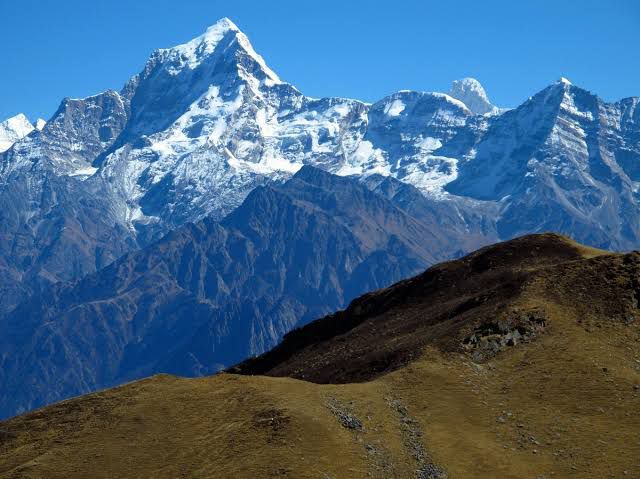
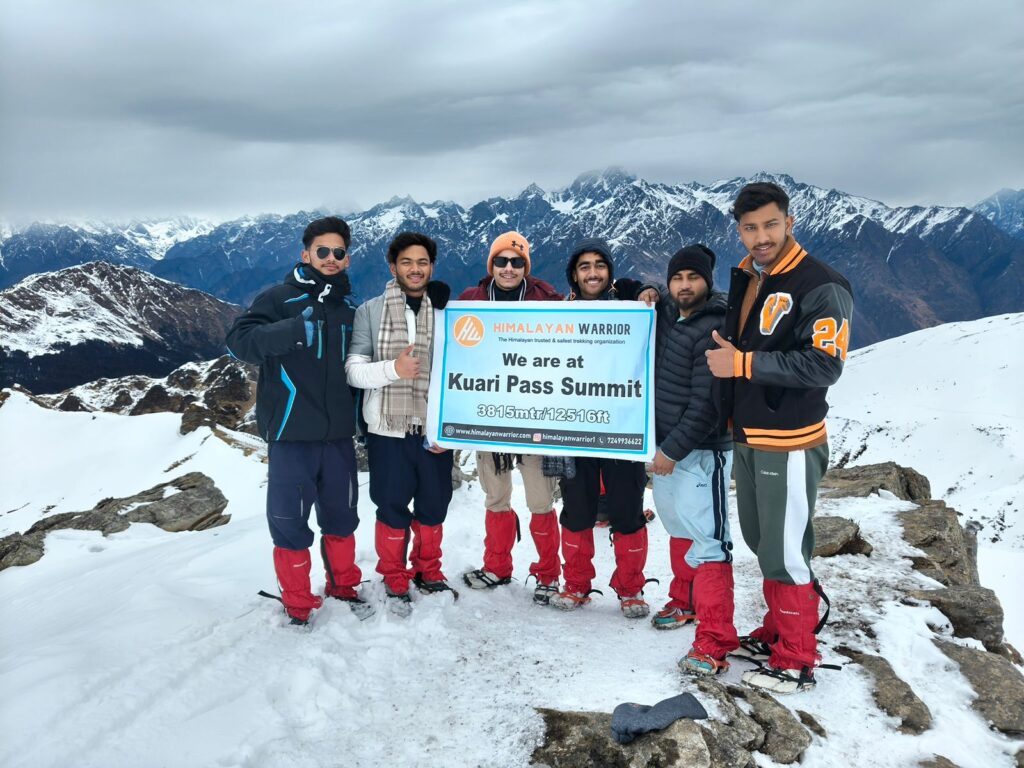
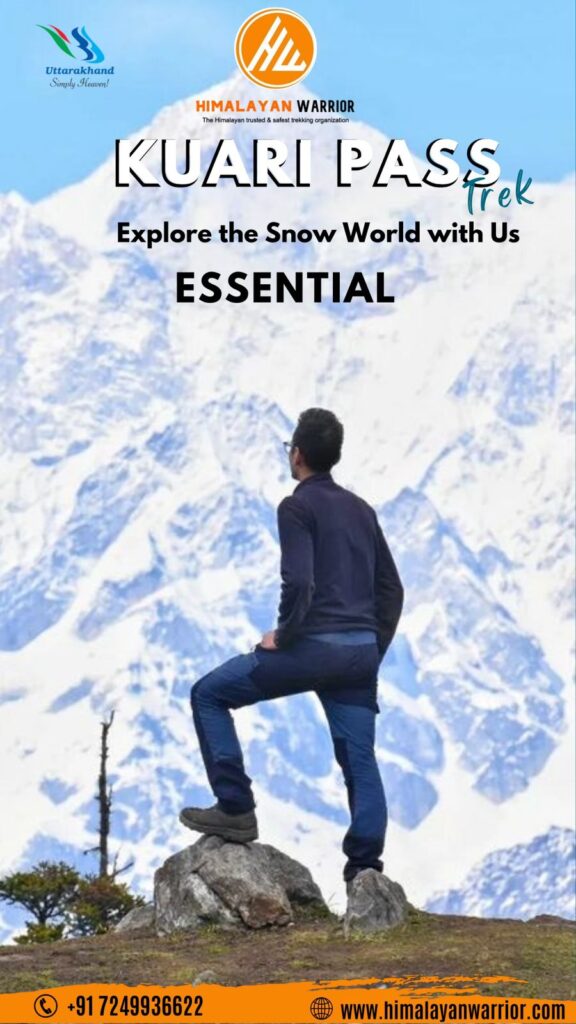
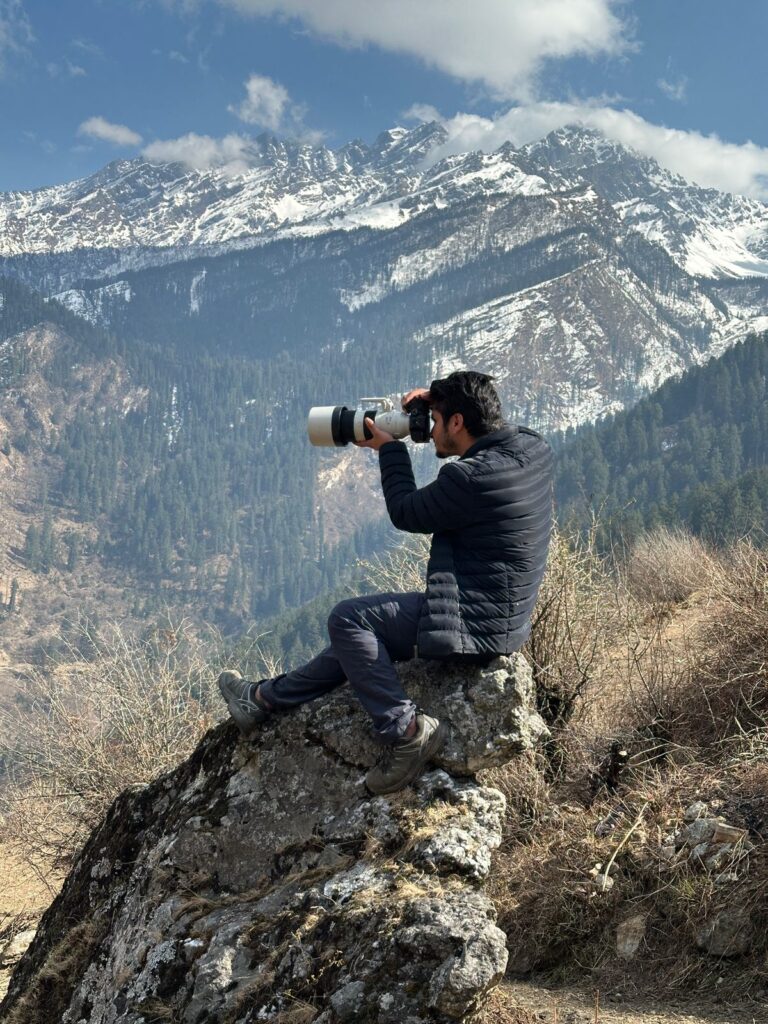
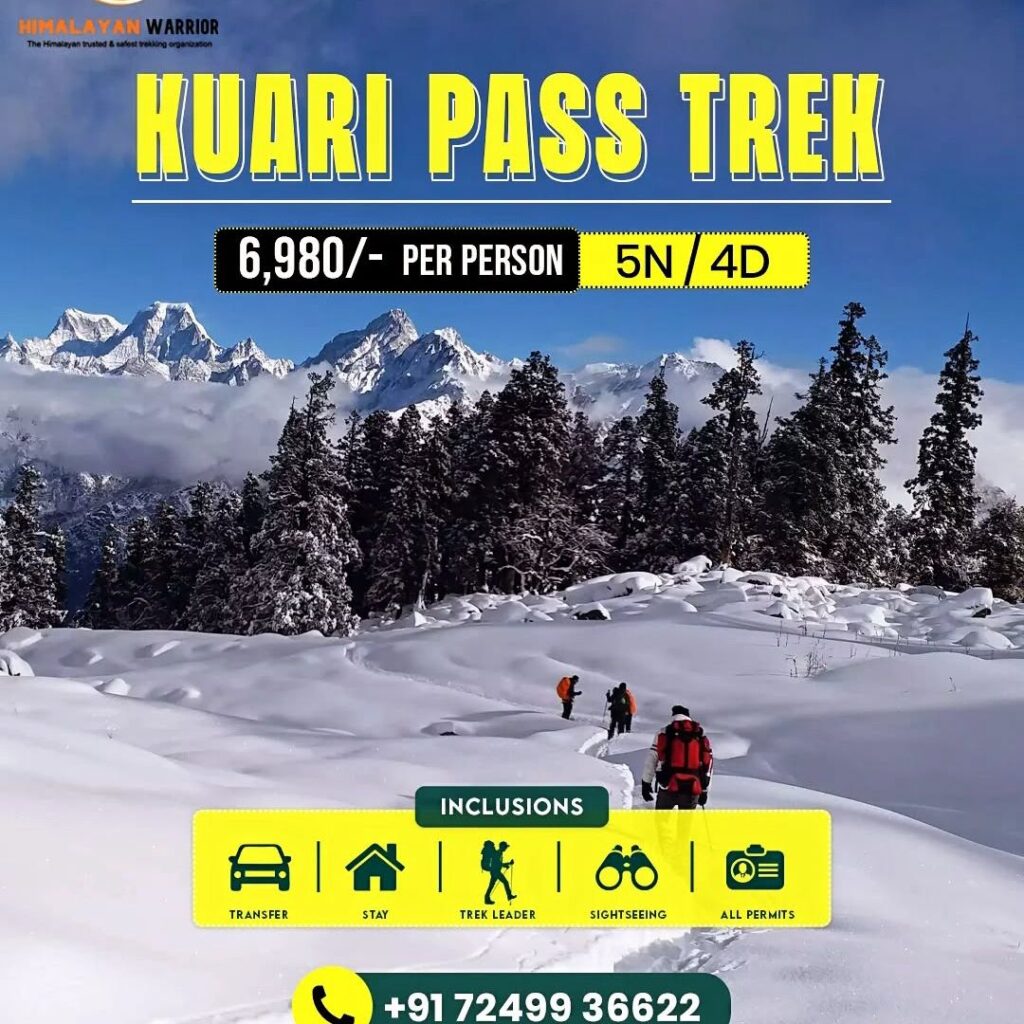
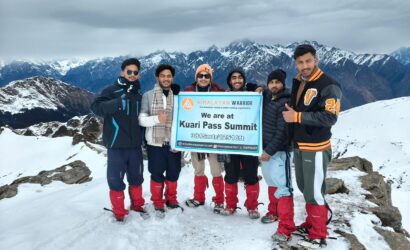


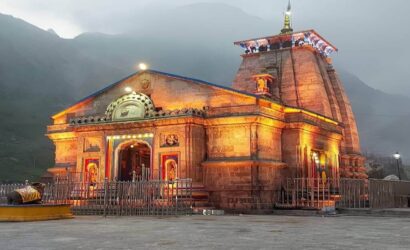



 About
About Contact
Contact
